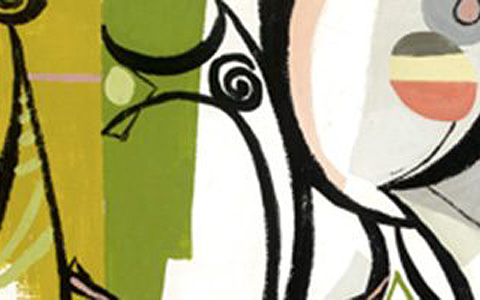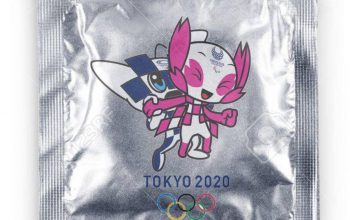In the early stage of the Cold War, the State Department decided to exhibit American abstract art overseas. They argued that modernist paintings were evidence of the cultural superiority of a society based on freedom, individualism, and capitalism.
By comparison, all the communists had to offer was Soviet Realism. It had few fans with is heavy handed political messages in which happy proletariat hewed coal and muscular men and women toiled in the fields to build a socialist paradise.
In the late-1940s, as the USSR was steadily swallowing up Eastern European countries, the State Department decided to use art exhibitions as propaganda, showing the superiority of the West over communism. Sophisticated elites in Europe were keen to see the latest modernist art, and the US hoped to lure them away from the Soviet sphere of influence.
In 1946, the State Department sponsored a traveling show, Advancing American Art. Among the artists represented were Philip Evergood, Arthur Dove, Stuart Davis, Max Weber, John Marin, Ben Shahn, and Marsden Hartley.
The collection was well received in Europe and after two months it reached Czechoslovakia.
But when anti-communist patriots in Congress heard about the exhibition all hell broke loose. McCarthy’s witch hunters were looking for hidden communist influence, and art was no exception. None was more vocal than Congressman from Michigan, George Dondero.
Dondero aggressively attacked all modern art, which he labelled as being “Communistic.” He went on to say: “Cubism aims to destroy by designed disorder. Futurism aims to destroy by machine myth … Dadaism aims to destroy by ridicule. Expressionism aims to destroy by aping the primitive and the insane. Obstructionism aims to destroy by the creation of brainstorms … Surrealism aims to destroy by the denial of reason.” Newspaper editorials joined the attack on the exhibition.
Rather than support the State Department, President Harry Truman joined the criticism, describing works in the exhibition as “ham-and-eggs art.”
When the exhibition still had a week to go in Czechoslovakia, it was closed and all the works were sold as war surplus for a pittance.
That ended the use of modernist art for Cold War propaganda, at least until the election of Dwight Eisenhower, who, unlike Truman, understood how important such exhibitions could be in winning hearts and minds.
Eisenhower worried that the Soviets were getting the upper hand as it lavishly supported touring art exhibitions, which he claimed were “making a deep impression.” Seeing that it had the field to itself after the Advancing American Art fiasco, the Soviet Union spent $9 million in 1956 on travelling art exhibits.
What was needed, Eisenhower said, was American art exhibitions that could “capture the imagination of the people of the older, heart loving nations of the world,” while at the same time “negative conceptions about us,” namely that Americans are “vulgar, materialistic nouveaux riches, lacking in manners and in sensitivity, interested only in making money, contemptuous of every refinement of aesthetic feeling.” Therefore it was important to “show the outside world both that we have a cultural life and that we care something about it.” If this could be done, “I for my part would willingly trade the entire remaining inventory of political propaganda for the results that could be achieved by such means alone.”
Keen to get back into the game, particularly now it was sure Eisenhower was fully behind it, the State Department decided to send another art exhibition overseas. Its destination was the Melbourne Olympic Games and it was on the theme of sport in art. What could be controversial about that? Well it was, and the full story is told in Cold War Games.



